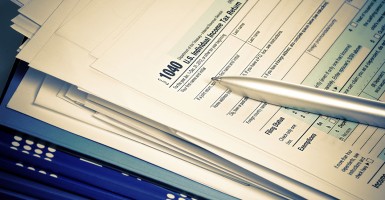Lawmakers in Washington have plenty of work ahead of them this year, so the temptation to punt on everything but the “hot” issues will be strong. Here’s one they should tackle without hesitation: tax reform.
It’s long overdue. One glance at the tax code, and you won’t be surprised to learn it’s been nearly 30 years since it was overhauled. Small wonder, as I noted in a recent column, that we’ve wound up with a Byzantine system of credits, deductions and exemptions, spread across tens of thousands of pages — one that can bewilder even the most seasoned tax preparer.
Complexity, though, is the least of our problems. The rates are simply too high. We’re making it needlessly difficult for Americans to save and invest. That hurts job growth and depresses wages.
Even people who know the rates are too high are often unaware of how much they’re paying to fund the federal government. Thanks to income and payroll tax withholding, and what tax expert Curtis Dubay calls “the hidden costs of corporate, employer payroll and excise taxes,” the full price tag remains something of a mystery to most of us.
The lack of true tax reform affects millions of hardworking Americans. “Families use savings to pay for down payments on homes, education, retirement, unexpected bills, or anything else that they may desire to buy in the future,” Dubay writes in “Opportunity for All, Favoritism to None,” a new policy book from the Heritage Foundation. “High rates discourage them from saving by making spending today more attractive than spending in the future.”
Take the corporate tax rate. To hear some politicians talk about it, it affects only corporations, which are often portrayed as ruthless and greedy. But what is the result of the United States having one of the highest corporate tax rates in the world? Less investment by companies headquartered here and abroad. That translates into fewer jobs and lower wages. The corporate tax rate, like so many others, affects all of us.
It’s not simply a question of lowering rates — as important as that is. It’s crucial that we apply these lower rates to the right tax base. This may sound technical, but it’s really not. What we’re talking about (if we get reform right, that is) is taxing consumption, not investment. The way to encourage savings and investment is to move more toward a traditional flat tax (one rate for all).
Why would this help? Because a flat tax is geared toward a tax base that’s more neutral. That means it doesn’t positively or negatively influence economic decision-making by families, businesses, investors and entrepreneurs. Instead of picking winners and losers, the government gets out of the way of individuals and businesses.
Another benefit to genuine tax reform is that it can help reduce the size of government. Federal spending is on an unsustainable path. Left unchecked, it will grow to levels that threaten the security of families. Tax reform, though, would make it easier to put government on a much-needed diet by making the cost of it more transparent to the American people.
And let’s not overlook one other obvious and very tangible benefit. “According to the Tax Foundation, the economy could grow as much as 15 percent more over 10 years because of tax reform,” Dubay writes. “After those 10 years, the average American family’s wages would be almost 10 percent higher. That would mean an extra $5,000 in the pockets of families making $50,000 per year (roughly the median income in the U.S. today).”
A smaller government. A healthier economy. More savings and investment. When you consider all the benefits of tax reform, the only question for lawmakers is this: When are you going to get started?
Originally appeared in the Washington Times.


























